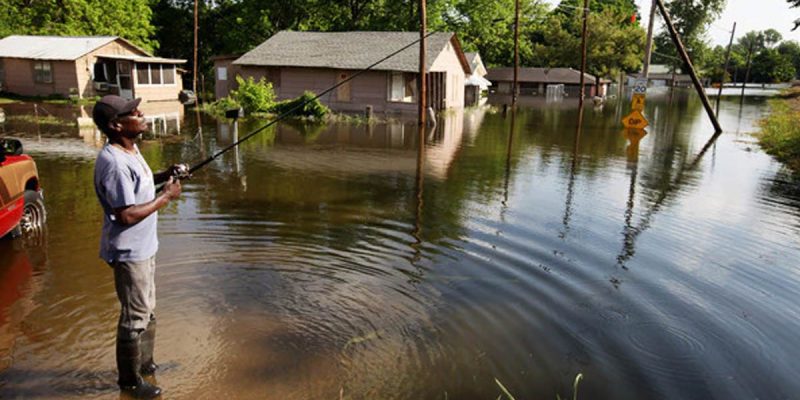While the idea behind the National Flood Insurance Program’s Risk Rating 2.0 is sound, its implementation has left something to be desired, which some Louisiana federal elected officials want and need to improve.
In the months since the implementation of the new rules that more accurately assign risk to national flood insurance, things to date have gone as predicted. While about a fifth of Louisianans who have this – which is required if living in certain high-risk areas of if a home has a mortgage – will experience a one-time rate reduction averaging $960 (about twice the total premium for the highest level of coverage in a zone considered highly unlikely to flood), about 77 percent will see an increase as much as $20 a month in perpetuity and the other three percent will see rates higher still.
Astronomically higher, in some cases. Particularly unfortunately placed properties are in line to see rates skyrocket several times their past level over the next decade, but not immediately as with a few exceptions of up to 25 percent, increases are capped at 18 percent a year over the next decade. Still, do the math, and that means at their 18 percent maximum annually rates will triple in that time span, although a premium cap of $12,125 remains in place for now, but that can be increased, as can the rate cap after the decade (the law doesn’t have one after then).
Keep in mind that the rate varies with home value, many of the higher-cost rates apply to homes not the primary homestead, and that these jurisdictions also are eligible to be grandfathered in for the current owners with flood insurance, and while the rate increase will be inconvenient, going from a few hundred to a couple of thousand dollars annually over the next decade isn’t that harmful of a proposition. Still, a very small portion of homeowners – exaggerated in Louisiana given its geography and topography – will see the cost of flood insurance as a proportion of their home value increase dramatically.
And even with premium caps and grandfathering, flood insurance costs for a few could cause big headaches down the road when selling or heirs assuming the property. Various discounts can apply to premiums, but not all are transferrable with the property and grandfathering disappears with new owners. Both can cause the sale price or value to deteriorate as compensation for having to pay higher rates, disrupting retirement or estate planning.
Yet the main problem with the new system, which in eight months will have affected every policyholder still with this insurance as rolling renewal opportunities continue, comes from its opaqueness, both in rate calculation and its consequences. Exemplifying the latter, only recently was the program administrator the Federal Emergency Management Administration made to release information predicting nearly a million American policyholders by the end of the decade won’t be able to afford the insurance, which could translate into about 20,000 in Louisiana.
The formula also remains proprietary, although NFIP manuals provide a list of mitigation actions the give general guidelines to premium savings. There seems little reason to keep it a secret, as public knowledge of it could give state and local government regulators and builders guidelines to build smarter, except that FEMA is afraid that would give away a competitive advantage to the burgeoning private sector insurers, which shouldn’t be its concern.
To overcome this secrecy, both Louisiana Republican Sens. Bill Cassidy and John Kennedy have introduced legislation to increase transparency, to which GOP Rep. Clay Higgins and Democrat Rep. Troy Carter have signed on. The senators also have worked together to include other measures dealing with rates, in one instance freezing them until reforming the program’s public notice and comment, creating a premium appeals process, and studying the economic impact and data reliability with submission to independent peer review, and in the other halving the maximum rate increase cap.
Advertisement
Both want this in the context of NFIP reauthorization, which has undergone a string of short-term lengthening over the past five years. Due to run out at the end of September, Cassidy’s version proposes another year, putting him at loggerheads with the Pres. Joe Biden Administration that wants to reauthorize for a decade and wipe out the program’s $20 billion debt in exchange for a set of reforms some at odds philosophically with these bills.
Those reforms, which largely mirror some proposed by the GOP Pres. Donald Trump Administration, would make the NFIP run more like a business yet also invite more private sector involvement, but could mean higher rates for some in Louisiana although they also would introduce a low-income subsidization option. These also promote the greater transparency sought by the senators.
All of the above might work. The NFIP’s eternal problem has been murkiness over its purpose. Whether flood insurance seems unprofitable for the private sector – increasingly the answer appears to be no – or an implicit reinsurance backstop needed to be in place (from the tendency of Congress to make special disaster appropriations commingling with the NFIP) to whether NFIP should price in a way to reduce moral hazard (which 2.0 tries to ameliorate), the focus keeps changing.
Perhaps the best strategy would be to make NFIP the insurer of last resort in cases where owner income and home equity would draw a disproportionate premium, aimed to keep more affordable rates for this segment. The proposed reforms and bills in large part do that, although other things still could aid this, such as by making NFIP policies cancelable at any time with refund that would encourage private sector insurer growth. As such, Louisiana’s members of Congress should embrace what’s currently on the table for reauthorization (minus the rate freeze), both what they and others have put there.
Advertisement
Advertisement

